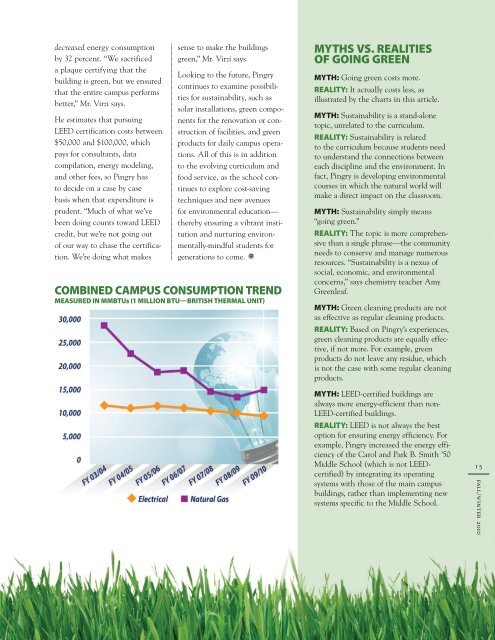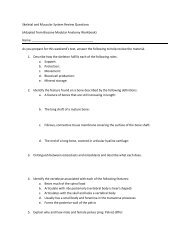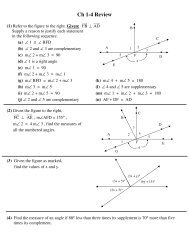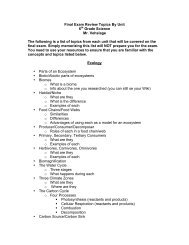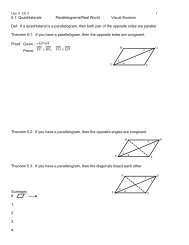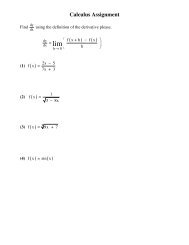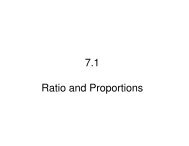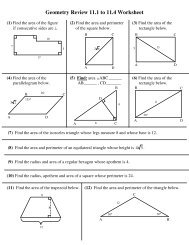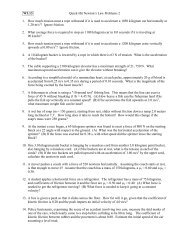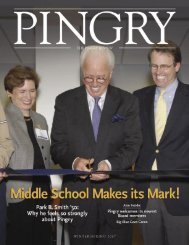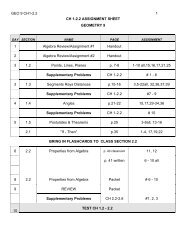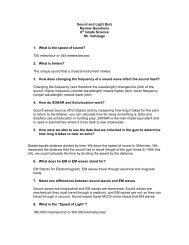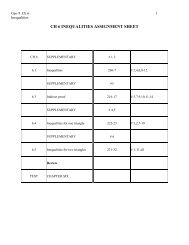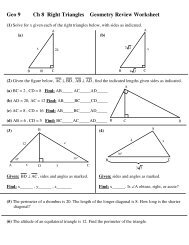Fall/Winter 2010 - Pingry School
Fall/Winter 2010 - Pingry School
Fall/Winter 2010 - Pingry School
Create successful ePaper yourself
Turn your PDF publications into a flip-book with our unique Google optimized e-Paper software.
decreased energy consumption<br />
by 32 percent. “We sacrificed<br />
a plaque certifying that the<br />
building is green, but we ensured<br />
that the entire campus performs<br />
better,” Mr. Virzi says.<br />
He estimates that pursuing<br />
LEED certification costs between<br />
$50,000 and $100,000, which<br />
pays for consultants, data<br />
compilation, energy modeling,<br />
and other fees, so <strong>Pingry</strong> has<br />
to decide on a case by case<br />
basis when that expenditure is<br />
prudent. “Much of what we’ve<br />
been doing counts toward LEED<br />
credit, but we’re not going out<br />
of our way to chase the certification.<br />
We’re doing what makes<br />
sense to make the buildings<br />
green,” Mr. Virzi says.<br />
Looking to the future, <strong>Pingry</strong><br />
continues to examine possibilities<br />
for sustainability, such as<br />
solar installations, green components<br />
for the renovation or construction<br />
of facilities, and green<br />
products for daily campus operations.<br />
All of this is in addition<br />
to the evolving curriculum and<br />
food service, as the school continues<br />
to explore cost-saving<br />
techniques and new avenues<br />
for environmental education—<br />
thereby ensuring a vibrant institution<br />
and nurturing environmentally-mindful<br />
students for<br />
generations to come.<br />
COMBINED CAMPUS CONSUMPTION TREND<br />
MEASURED IN MMBTUs (1 MILLION BTU—BRITISH THERMAL UNIT)<br />
MYTHS VS. REALITIES<br />
OF GOING GREEN<br />
MYTH: Going green costs more.<br />
REALITY: It actually costs less, as<br />
illustrated by the charts in this article.<br />
MYTH: Sustainability is a stand-alone<br />
topic, unrelated to the curriculum.<br />
REALITY: Sustainability is related<br />
to the curriculum because students need<br />
to understand the connections between<br />
each discipline and the environment. In<br />
fact, <strong>Pingry</strong> is developing environmental<br />
courses in which the natural world will<br />
make a direct impact on the classroom.<br />
MYTH: Sustainability simply means<br />
“going green.”<br />
REALITY: The topic is more comprehensive<br />
than a single phrase—the community<br />
needs to conserve and manage numerous<br />
resources. “Sustainability is a nexus of<br />
social, economic, and environmental<br />
concerns,” says chemistry teacher Amy<br />
Greenleaf.<br />
MYTH: Green cleaning products are not<br />
as effective as regular cleaning products.<br />
REALITY: Based on <strong>Pingry</strong>’s experiences,<br />
green cleaning products are equally effective,<br />
if not more. For example, green<br />
products do not leave any residue, which<br />
is not the case with some regular cleaning<br />
products.<br />
MYTH: LEED-certified buildings are<br />
always more energy-efficient than non-<br />
LEED-certified buildings.<br />
REALITY: LEED is not always the best<br />
option for ensuring energy efficiency. For<br />
example, <strong>Pingry</strong> increased the energy efficiency<br />
of the Carol and Park B. Smith ’50<br />
Middle <strong>School</strong> (which is not LEEDcertified)<br />
by integrating its operating<br />
systems with those of the main campus<br />
buildings, rather than implementing new<br />
systems specific to the Middle <strong>School</strong>.<br />
15<br />
fall/winter <strong>2010</strong>


